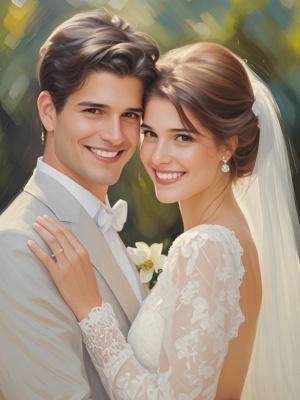Exploring the Diverse World of Oil Painting Techniques
Oil painting is one of the most versatile and enduring art forms, with a rich history spanning centuries. Artists have developed numerous techniques to create stunning works that range from photorealistic portraits to abstract expressions. In this comprehensive guide, we'll explore the major types of oil painting, their unique characteristics, and how contemporary artists are combining traditional methods with modern innovations like AI painting techniques.
Traditional Oil Painting Techniques
1. Alla Prima (Wet-on-Wet)
The alla prima technique, also known as direct painting or wet-on-wet, involves completing a painting in one session while the paint is still wet. This approach creates vibrant, spontaneous works with visible brushstrokes. Many impressionist painters favored this method for its energy and immediacy.
Key characteristics:
- Quick execution (usually completed in one sitting)
- Thick, expressive brushwork
- Minimal layering
- Excellent for plein air painting
2. Glazing Technique
Glazing involves applying thin, transparent layers of oil paint over dried underlayers. This technique creates luminous, jewel-like colors and incredible depth. Old Masters like Rembrandt and Vermeer perfected this method to achieve their signature glowing effects.
Problem-Solution Matrix for Glazing:
| Problem | Solution |
|---|---|
| Muddy colors | Use pure pigments and wait for each layer to dry completely |
| Lack of depth | Build up multiple thin glazes gradually |
| Slow process | Work on multiple paintings simultaneously |
Modern Oil Painting Approaches
3. Impasto Technique
Impasto involves applying paint thickly, often with palette knives, creating textured surfaces that catch light dramatically. Van Gogh's energetic works showcase this technique beautifully. Contemporary artists sometimes combine impasto with AI art generation for unique hybrid creations.
Notable impasto characteristics:
- Three-dimensional paint application
- Visible tool marks (brush or knife strokes)
- Enhanced light reflection
- Expressive, emotional quality
4. Scumbling and Dry Brush
Scumbling applies a thin, opaque layer of lighter paint over darker dried layers using a dry brush. This creates broken color effects and atmospheric qualities perfect for landscapes and portraits. The technique works particularly well when combined with portrait transformation methods.
Specialized Oil Painting Methods

5. Grisaille and Underpainting
Grisaille is a monochromatic underpainting technique that establishes values before applying color. Many classical painters used this method to perfect their compositions and lighting before adding color glazes. Today's artists sometimes use digital tools to plan their grisaille layers.
Benefits of grisaille:
- Strong value structure
- Easier color application
- Classical painting approach
- Excellent for beginners learning oil painting
Conclusion: The Evolving Art of Oil Painting
From traditional glazing to modern impasto, oil painting techniques continue to evolve while maintaining their historical roots. Contemporary artists are finding innovative ways to blend these time-honored methods with digital tools and AI-assisted processes. Whether you're interested in classical realism or experimental abstraction, understanding these different approaches can enhance your appreciation of oil painting as both an art form and a technical discipline.
For those looking to explore these techniques further, consider visiting our online gallery to see examples of both traditional and contemporary oil painting styles. You might also enjoy learning about oil painting history at Tate's comprehensive resource.